Do you have a fireplace or wood-burning stove in your home? If you do, how often should you sweep your chimney? Neglecting proper chimney maintenance can lead to reduced heating efficiency and house fires.
Statistics reveal that roughly 14,000 chimney fires are reported annually in the United States, and an overwhelming 90% of these incidents are attributed to creosote accumulation.
Those numbers show how important it is to have your chimney sweeped regularly. Most experts and the NFPA recommend homeowners should sweep or inspect their chimneys annually, although the frequency may vary depending on usage and other factors.
How Often Should You Sweep Your Chimney
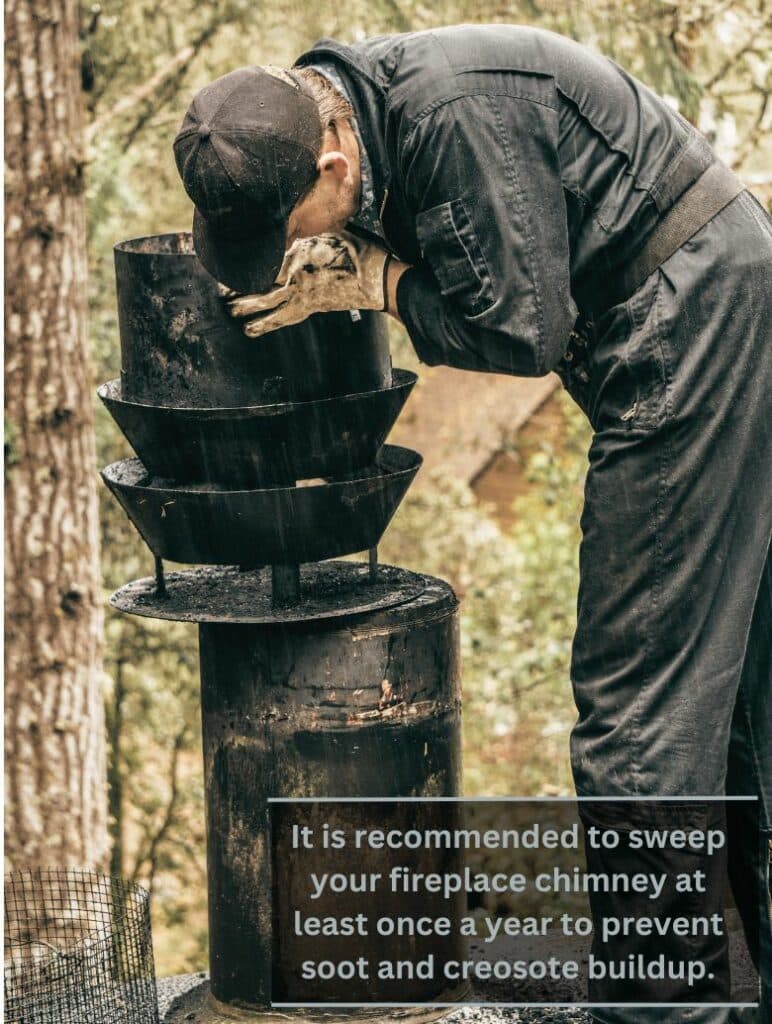
It is recommended to sweep your fireplace chimney at least once a year to prevent soot and creosote buildup. However, if your fireplace sees a lot of use, the chimney may require more frequent sweeping to remove the increased accumulation.
By performing regular maintenance and inspection, you can ensure the safety of your home by removing soot and preventing creosote buildup. Additionally, this will enhance your fireplace’s efficiency, saving you money.
So, what is the best time to sweep your chimney? The best times for chimney sweeping are during the warmer months between spring and late summer. Cleaning at this time of the year allows you to have your chimney in top condition before the colder months when you will likely use your fireplace more frequently.
Ensure you select the right chimney service for the job. A quality chimney sweep offers various benefits, such as reliability, experience, attention to detail, and a job well done.
——
Do You Need to Hire Chimney & Fireplace Expert?
Get free quotes from qualified experts near you. No commitment required!
——
Factors Affecting Chimney Sweeping Frequency
Several factors influence the frequency of chimney sweeping. Understanding these factors will help you maintain a safe and efficient chimney system in your home. They include:
Type of Fuel Burned
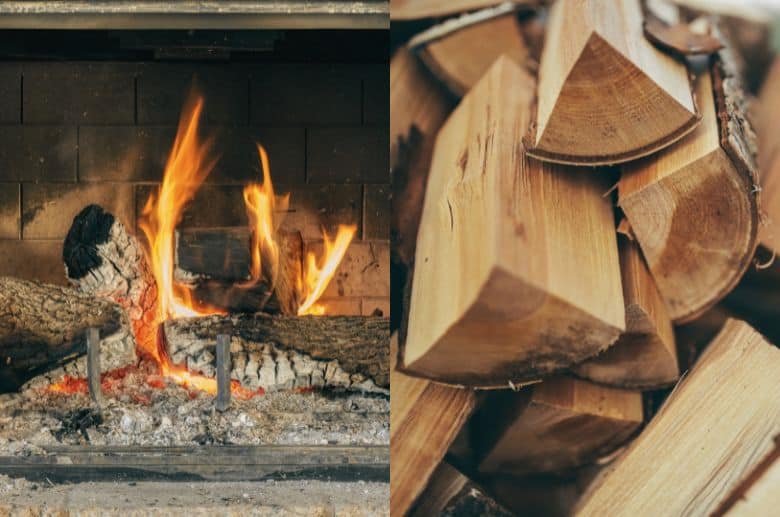
Burning certain fuels produces more creosote, which can lead to a higher risk of chimney fires. For example, burning wood generates a higher creosote buildup than burning gas. This is according to research from the University Of Kentucky, which showed creosote deposits had a faster accumulation in stoves that burnt wood than those burning gas.
Frequency And Duration of Fireplace Use
If you use your fireplace or stove heavily throughout the colder months, creosote and debris can accumulate faster, increasing the risk of chimney fires. A practical suggestion is to maintain a log of your fireplace usage to gauge whether more frequent cleanings are necessary.
By diligently noting the frequency of usage and the duration of each instance, you can effectively ascertain when it becomes imperative to engage the services of a chimney sweep business.
Type of Chimney
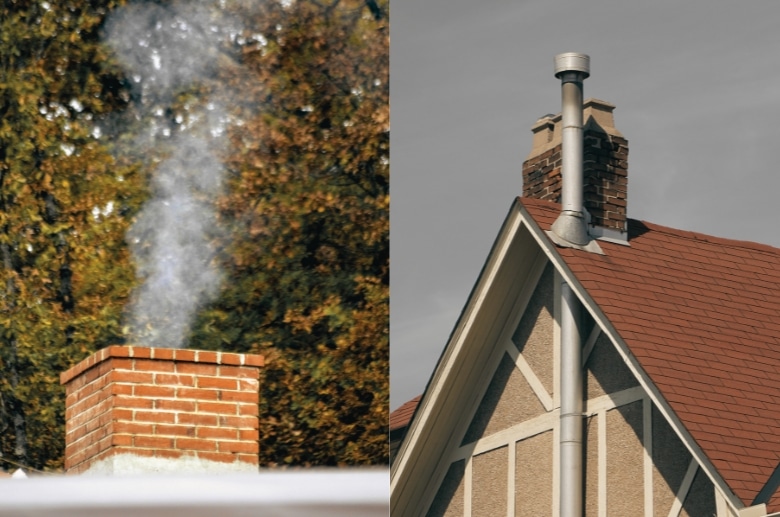
Different materials used in constructing chimneys have varying levels of susceptibility to creosote buildup and structural issues. Chimneys with clay tile liners are prone to cracks and damage over time, leading to creosote accumulation faster.
This may require more frequent cleanings than chimneys with stainless steel liners, which are more resistant to damage and buildup.
Age of the Chimney
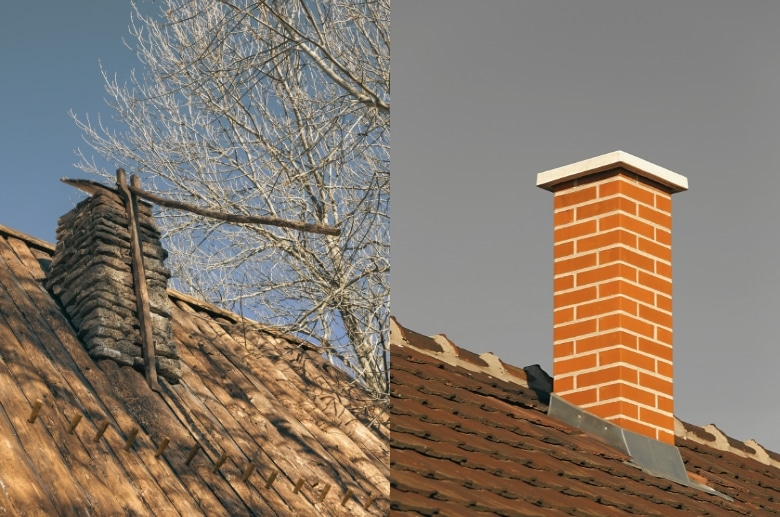
Older chimneys may have accumulated more wear and tear, resulting in decreased efficiency and an increased risk of soot and dirt buildup. For instance, a chimney that has been in use for several decades may need more frequent cleanings to maintain safety and functionality.
Environmental And Local Weather Conditions
Homes situated in areas with higher air pollution or surrounded by trees may experience more rapid soot and debris accumulation. For example, during cold and wet winters, chimneys can develop more creosote due to incomplete combustion caused by lower temperatures.
Rainy weather can also cause water to seep into the chimney, mixing with creosote and creating a highly acidic substance that accelerates chimney deterioration. Such conditions can necessitate more frequent cleanings to ensure proper airflow and prevent potential hazards.
Frequency of Chimney Sweeping for Different Types of Fuel
The frequency of chimney sweeping also varies depending on the type of fuel burned in the fireplace or stove. Each fuel type produces different byproducts and residues, influencing how quickly creosote and debris accumulate and, consequently, the recommended sweeping frequency.
Here is the chimney sweeping frequency for various types of fuel:
Wood-Burning Fireplace
Wood stoves are among the most commonly used fireplaces in America. According to research, approximately 11.6 million homes in the United States use wood-burning fireplaces.
If you have a wood-burning fireplace, we recommend sweeping your chimney at least twice a year. Burning wood generates a significant amount of creosote, which can accumulate rapidly and increase the risk of chimney fires.
Gas Fireplace
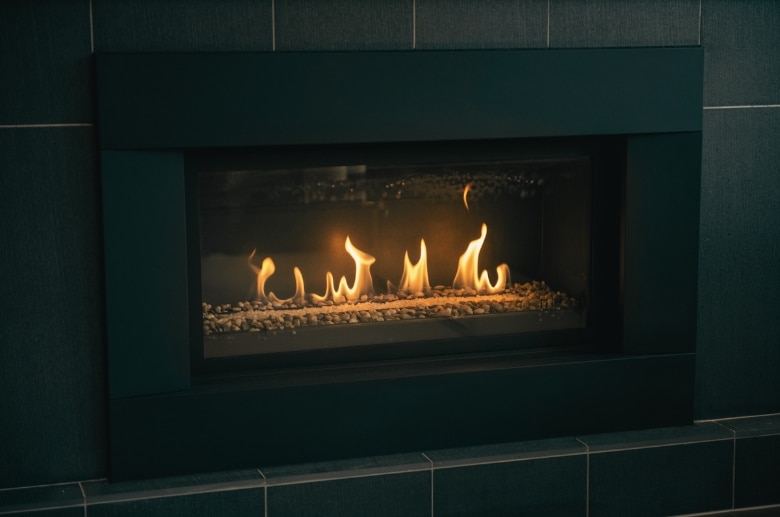
Gas fireplaces produce less creosote compared to wood-burning fireplaces. Therefore, the recommended frequency for chimney sweeping is once a year. While gas fireplaces are generally cleaner, they can still accumulate debris and blockages, necessitating an annual cleaning for optimal performance.
Oil-Burning Stove
Oil-burning stoves produce moderate amounts of soot and creosote during combustion. While these residues are not as significant as those produced by wood-burning fireplaces, they can accumulate over time and impede proper venting.
Having the chimney professionally swept twice yearly ensures that soot or creosote buildup is removed, allowing for efficient venting and preventing potential issues. Regular maintenance and cleaning are essential to keep your oil-burning stove operating safely and effectively.
Pellet Stove

Pellet stoves burn compressed wood pellets, producing minimal creosote compared to traditional wood-burning stoves. As a result, chimney sweeping is recommended once a year.
However, pellet stoves still require basic weekly maintenance and annual cleaning by a contractor to ensure the chimney is clear of debris or obstructions.
Frequency of Chimney Sweeping Based on Usage
Different usage levels can lead to varying creosote and debris buildup rates, affecting the recommended sweeping frequency. Below, we recommend different guidelines for chimney sweeping frequency based on usage:
Occasional Use
If you use your fireplace only occasionally, such as once or twice a year, the chimney sweeping frequency can be once every 1-2 years. With infrequent use, creosote and debris accumulation are minimal, allowing longer intervals between cleanings.
However, it’s essential to have the chimney inspected annually by a professional team to ensure it remains in good condition.
——
Do You Need to Hire Chimney & Fireplace Expert?
Get free quotes from qualified experts near you. No commitment required!
——
Regular Use
The recommended chimney sweeping frequency is once a year for regular use, where the fireplace or stove is used throughout the heating season. Regular use leads to more significant creosote and debris buildup, necessitating annual cleanings to prevent the risk of chimney fires and ensure optimal performance.
A good example is if you live in regions with cold winters and rely on your wood-burning stove or fireplace as the primary heating source.
Heavy Use
If you constantly use or burn wood or other fuels daily, ensure your chimney is swept twice a year. Heavy use leads to rapid creosote accumulation and an increased risk of chimney fires.
Frequent use puts additional strain on the chimney system, causing faster wear and tear, leading to structural issues and decreased efficiency over time. Scheduling two yearly cleanings mitigates heavy usage’s effects, prolongs the chimney’s lifespan, and maintains optimal safety and efficiency.
Moreover, having the chimney inspected by a certified professional during each cleaning can identify any structural issues early on, allowing for timely repairs and further ensuring the chimney’s functionality.
Signs That Indicate It’s Time for a Sweep
Certain signs indicate that it’s time to schedule a chimney sweep to address potential issues and ensure the proper functioning of your chimney system. Some of them include:
The Smell of Creosote
If you notice a strong, acrid odor coming from your fireplace, it could be a sign of creosote buildup. This indicates you need a professional chimney inspection and cleaning as soon as possible.
Difficulty in Starting Fires or Poor Fire Performance
The buildup of creosote or debris can hinder proper airflow, affecting the fire’s ability to burn efficiently. A chimney sweep will clear the obstruction, restoring the fireplace’s performance and eliminating the problem.
Smoke Coming Back into the Room
If you notice smoke entering the room instead of being vented outside through the chimney, there may be a blockage in the flue. This can be hazardous since harmful gases are not directed away from your living space. But a chimney sweep can address the issue and ensure proper ventilation.
Visible Soot or Creosote in the Fireplace or Flue
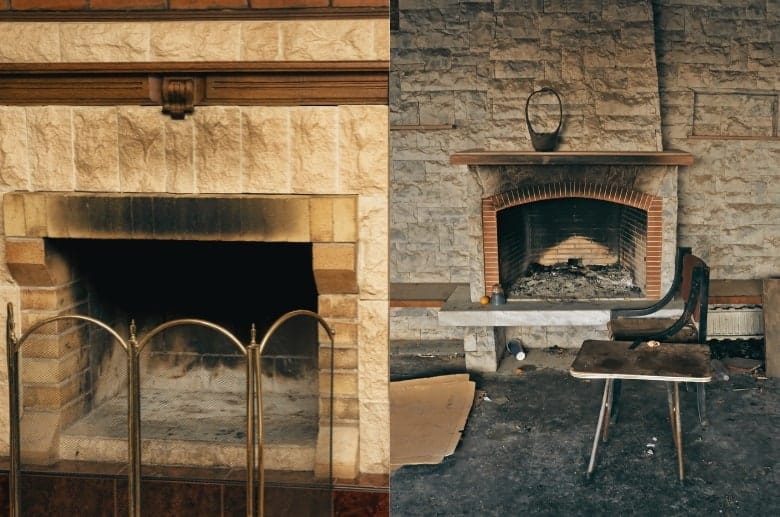
Examining the chimney’s inner walls, you can identify visible soot or creosote in the fireplace or flue. A flashlight can be of great assistance in illuminating the area. Soot is a fine black or brown powder resembling dust, while creosote is a shiny, tar-like substance that typically appears in three stages.
The first stage of creosote is a flaky residue, the second is a lumpy, porous texture, and the third is a hard, glossy incrustation. These are highly combustible and increase the risk of a chimney fire.
A professional chimney sweep can help in multiple ways:
- First, unlike DIY chimney sweeping, professionals have the knowledge and experience to identify and assess the level of creosote build-up.
- Second, they can efficiently and safely remove the build-up using specialized tools and techniques.
- Lastly, regular chimney sweeping reduces the risk of chimney fires and enables optimal functioning of your fireplace.
The Impact of Neglecting Annual Chimney Cleaning on Safety and Performance
Here are six significant impacts of neglecting annual chimney cleaning and maintenance:
- Increased Risk of Chimney Fires: Neglecting cleaning allows creosote to build up to dangerous levels, significantly increasing the risk of chimney fires.
- Poor Ventilation: Debris and blockages in the chimney can hinder proper ventilation, leading to smoke and harmful gases, like carbon monoxide, entering your living space instead of being directed outside. This can pose severe health problems, such as CO poisoning risks to you and your family.
- Reduced Heating Efficiency: A dirty chimney with creosote and debris buildup obstructs the airflow, reducing the efficiency of your fireplace or stove. This produces less heat and wasted fuel, resulting in higher energy costs.
- Structural Damage: Neglected chimneys are more prone to structural issues. Creosote can corrode the chimney liner and masonry, causing deterioration over time. These damages can be costly to repair and compromise the overall integrity of the chimney.
- Unpleasant Odors: The accumulation of creosote and debris in the chimney can create foul odors that permeate your home, making it an uncomfortable living environment.
- Expensive Repairs: Ignoring regular chimney maintenance may lead to more significant issues over time, requiring expensive repairs or a complete chimney rebuild.
——
Do You Need to Hire Chimney & Fireplace Expert?
Get free quotes from qualified experts near you. No commitment required!
——
What Is the Cost of Chimney Sweeping
The cost of chimney sweeping typically ranges from $100 to $400, with the national average around $256. However, this cost can vary depending on various factors, such as the following:
- Location: Chimney sweeping services in urban areas or areas with a higher cost of living may be more expensive than in rural locations. Additionally, accessibility to your chimney, especially in multi-story buildings, can impact the cost. Service providers may need specialized equipment or additional labor to access hard-to-reach chimneys, which can lead to higher prices.
- Size of the Chimney: Larger chimneys require more time, effort, and cleaning materials, resulting in a higher cost for sweeping. Chimneys with multiple flues or complex designs may incur additional charges due to the increased workload for the service provider.
- Level of Creosote Buildup: Heavy creosote buildup may require more extensive cleaning and additional tools or chemicals to remove stubborn residues. Chimneys with excessive creosote accumulation may take longer to clean, leading to higher service charges.
- Service Provider’s Pricing: Different chimney sweep companies offer different pricing based on their reputation, experience, and expertise. Request quotations from different companies before making your pick.
Golden Tip: Select a chimney sweep company based on their qualifications and track record rather than solely on the lowest price. While cost is a factor, prioritize quality and safety when selecting a service provider to maintain your chimney system.
Conclusion
Regular maintenance is essential to ensure a safe and efficient chimney system. However, usage, fuel type, and construction will influence how often you sweep your chimney.
For occasional use, we recommend a chimney sweep once every 1-2 years. On the other hand, we recommend an annual cleaning for regular use. If you frequently use your chimney, we advise cleaning it twice a year, particularly for tile chimneys that are heavily used with wood or other fuels.
Take the time to evaluate your chimney cleaning practices and make any necessary adjustments based on the information provided. Additionally, schedule routine chimney maintenance with a trusted and experienced sweep.






